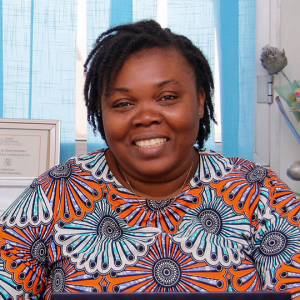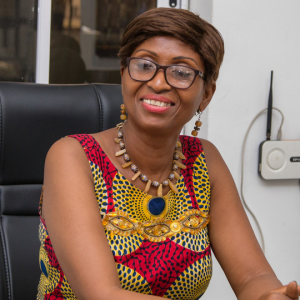Faced with the many challenges of education in Africa, a boiling entrepreneurial dynamic is emerging and provides innovative solutions. Impact investors, characterized by their intention to generate a positive social…
Faced with the many challenges of education in Africa, a boiling entrepreneurial dynamic is emerging and provides innovative solutions. Impact investors, characterized by their intention to generate a positive social and/or environmental impact, can give decisive support to this dynamic. But it seems necessary to develop specific tools and a real partnership approach with the other stakeholders in the sector in order to bring out a new generation of private schools and education businesses that are responsible and fully oriented towards the continent’s development challenges.
From Education to Employment: the numerous challenges of the African continent
Despite tremendous progress since the early 2000s, African education systems are in a critical situation and are struggling to ensure successful learning and employment opportunities for young Africans. Primary school enrolment in Africa is gradually reaching generalization thanks to the massive effort made by African governments and their partners under the framework of Millennium then Sustainable Development Goals. Yet 34 million children are still not in primary school[1], particularly in fragile countries or in conflict situations[2]. In addition, many national and international evaluations have shown that the majority of African students do not acquire basic knowledge and skills after completing primary school education[3]. Schools face many human, material and pedagogical resource deficits and the large size of cohorts of pupils in many public schools produce more frustration than effective learning[4].
While a minority of the population accesses higher education and vocational training, these training courses are often considered too theoretical and disconnected from the needs of local or international employers[5]. While youth unemployment rates in Africa are not higher than in other regions of the world, rates of informal employment and working poverty remain critical and constitute an increasing risk of social and political destabilization[6].
The Private Sector is Growing in the African education systems
The private education sector, in all its diversity, is gradually emerging as an important player in addressing these challenges. It is now estimated that about one in five students in Africa is enrolled in a private school[7]. But this figure covers a very diverse sector, made up of religious schools, for-profit institutions, informal structures or schools directly managed by philanthropic organizations. We observe however a common dynamic across African countries: private operators are gaining ground and are increasing the range of training available in most educational cycles.
This gradual expansion of the private education sector represents both an opportunity and a considerable challenge for all actors in the education chain. States and their partners must strengthen their capacity to regulate these private operators and ensure that no educational institution, whether public or private, can break the needed trust between the school, the learner and society.
A new wave of African entrepreneurs is emerging, bringing promising solutions to educational challenges across the continent. From e-learning solutions to SMS-based course platforms and teacher coaching sessions, entrepreneurs have plenty of ideas to experiment with new pedagogical models and to overcome the material constraints that have long hampered the entire education system. With the boom of promising solutions to build the African school of tomorrow, the role of research and impact evaluation becomes key to select the most relevant and effective models for enhancing learning and inclusion for all. The role of education technology education is also becoming an important element of debate for all stakeholders in the education system (governments, entrepreneurs, teachers, parents and learners).
A new wave of African entrepreneurs is emerging, bringing promising solutions to educational challenges across the continent.
But ed-tech leaders are not alone in demonstrating innovation and dynamism, quite the contrary. Hundreds of creative entrepreneurs overcome complex logistical and institutional challenges to provide schools with textbooks, furniture and equipment that are key inputs for the ecosystem as can be digital tablets. In Niger, for example, Editions Afrique Lecture[8] is the first company to provide high school students with preparatory textbooks for their baccalaureate. For these entrepreneurs, the strategic relationship with governments and other stakeholders in the education system is at least as important as the use of technology to provide services that are truly useful to local schools and students.
What role for Impact Investors?
Impact investors must support this entrepreneurial dynamism with appropriate return expectations depending on the maturity and size of the projects. Current research shows that most investors only support schools and universities that are already very well structured, and in many cases designed to provide educational services only to the wealthiest segments of the population. To a lesser extent, these investors have also supported innovative and more affordable educational projects, but these projects had to grow at a disproportionate speed to meet the investors’ profitability objectives. The well-known example of Bridge Academies[9] in East Africa highlighted how difficult it was for a network of low-cost schools to scale up without deteriorating the quality of teaching… and the company’s relations with public authorities. The needs for impact investing initiatives in the education sector is pressing, especially in French-speaking and Portuguese-speaking Africa. Impact funds must find ways to support less advanced projects, for example in the technical and vocational education cycles where public actors are less involved. These investors must therefore develop financial and non-financial instruments (coaching, technical assistance) suited to this specific social sector, with a particular focus on the inclusion of young women and vulnerable populations.
The needs for impact investing initiatives in the education sector is pressing, especially in French-speaking and Portuguese-speaking Africa.
To support the emergence of accessible and quality educational opportunities, impact investors will need to be innovative in building new partnerships with other stakeholders in the sector. Partnerships with foundations and other philanthropic donors will allow impact investors to reach young people from disadvantaged backgrounds. Scholarship or student loan schemes funded by these foundations could broaden access to quality private institutions whose social impact commitments will be guaranteed by the presence of an ethical investors as minority shareholder. In addition, partnerships between impact investment teams and philanthropic actors could be designed to support start-ups and other early-stage projects. The pioneering example of the Education Impact Fund in Côte d’Ivoire[10], resulting from a partnership between the Jacobs Foundation and the impact fund Comoé Capital, is a good illustration. This programme has benefited 6 promising start-ups and young companies in the Ivorian education sector, including a hospitality training centre located in the popular district of Yopougon[11] and the start-up Etudesk[12], recently selected as one of the 10 most prominent Ed-Tech companies on the continent[13]. The success of this investment programme relies on the targeted use of risk capital provided by a philanthropic donor and on a particularly committed investment team working alongside entrepreneurs. But there are many other strategies to explore. It would be relevant to partner with research institutions to measure and evaluate the long-term impacts of the education models supported by the investors. Thus, the development of blended finance instruments[14], mixing investments and grant funding support will be key to providing solutions adapted to the emergence of responsible and committed private education businesses.
To conclude
To meet the challenges of quality, access and relevance of education in Africa, impact investors will have to design and mobilize innovative strategies and methods, tailored to the needs of a crisis-stricken social sector and a fast-paced entrepreneurial ecosystem. The active support of bilateral and multilateral development organizations will ensure the credibility and sustainability of these new models of mixed funding and innovative partnerships. Through their governance and practices, impact investors should pursue the dialogue with public authorities to ensure that they are well integrated into local educational ecosystems. Associated with expert philanthropic players, these new initiatives will have to support the best models of schools and ancillary activities combining economic sustainability and impact performance. It is only with this attitude of innovation, cooperation and partnership that impact investors will be able to make a relevant contribution to the challenges of education in Africa.
References
[1] See the data collected by UNESCO (2018): http://uis.unesco.org/sites/default/files/documents/fs48-one-five-children-adolescents-youth-out-school-2018-en.pdf
[2] See Page 10 (Fig. 6) of the above-mentioned: most of the countries severely affected by the non-enrolment of children in primary school are located in the Sahel or Central Africa.
[3] The World Bank’s World Development Report 2018 provides an in-depth analysis of this learning crisis: http://www.worldbank.org/en/publication/wdr2018
In French-speaking Africa, the performance of students during primary school is evaluated by PASEC about every 3-5 years. http://www.pasec.confemen.org/
[4] Many reports have highlighted these deficits in school materials and equipment, as well as the size of classes that can reach an average of 50 children in Burkina Faso or Mali and up to 90 in Malawi and the Central African Republic. http://uis.unesco.org/sites/default/files/school-resources-and-learning-environment-in-africa-2016-en/school-resources-and-learning-environment-in-africa-2016-en.pdf
[5] On the issue of the relevance of education and the lack of adequacy between education and employment, see World Bank’s report (2014) : http://www.worldbank.org/en/programs/africa-regional-studies/publication/youth-employment-in-sub-saharan-africa. This phenomenon is also sometimes reflected in a higher unemployment rate for graduate students than for non-graduates in several African countries. Because their training is poorly adapted to the labour market, graduates have difficulty finding employment in skilled positions.
[6] The average youth unemployment rate in Sub-Saharan Africa is 6%, the world average 5%. But this figure hides far more precarious realities, with self-employment rates reaching 70% in the Democratic Republic of Congo or Ghana. The rate of working poverty could reach 80%, according to the ILO. https://www.un.org/africarenewal/magazine/may-2013/africa%E2%80%99s-youth-%E2%80%9Cticking-time-bomb%E2%80%9D-or-opportunity
[7] This figure is estimated by the team of the Report “Business of Education in Africa” (2017) https://edafricareport.caeruscapital.co/thebusinessofeducationinafrica.pdf
[8] http://afriquelecture.com/index.html
[9] See notably RFI’s article (2018): http://www.rfi.fr/afrique/20180301-ecole-privees-bas-prix-bridge-international-academies-lettre-fermeture-ong
[10] See the website of the partnership: http://www.edimpactfund.com/ but also the announcement of the first investments in 2018: http://www.ietp.com/fr/content/investissement-editions-vallesse . The complete portfolio of the six investments will be published soon.
[11] https://www.facebook.com/roijuvenal/
[12] https://www.etudesk.com/
[13] See the startups selected at the famous Dubai Global Education Conference (22-24 March 2019) https://www.forbes.com/sites/mfonobongnsehe/2019/02/25/meet-the-10-african-startups-competing-for-the-next-billion-edtech-prize-in-dubai/#46d350f03e1b
[14] Also called blended finance. The term refers to the use of catalytic capital from public or philanthropic sources to increase private sector investment in developing countries and sustainable development

